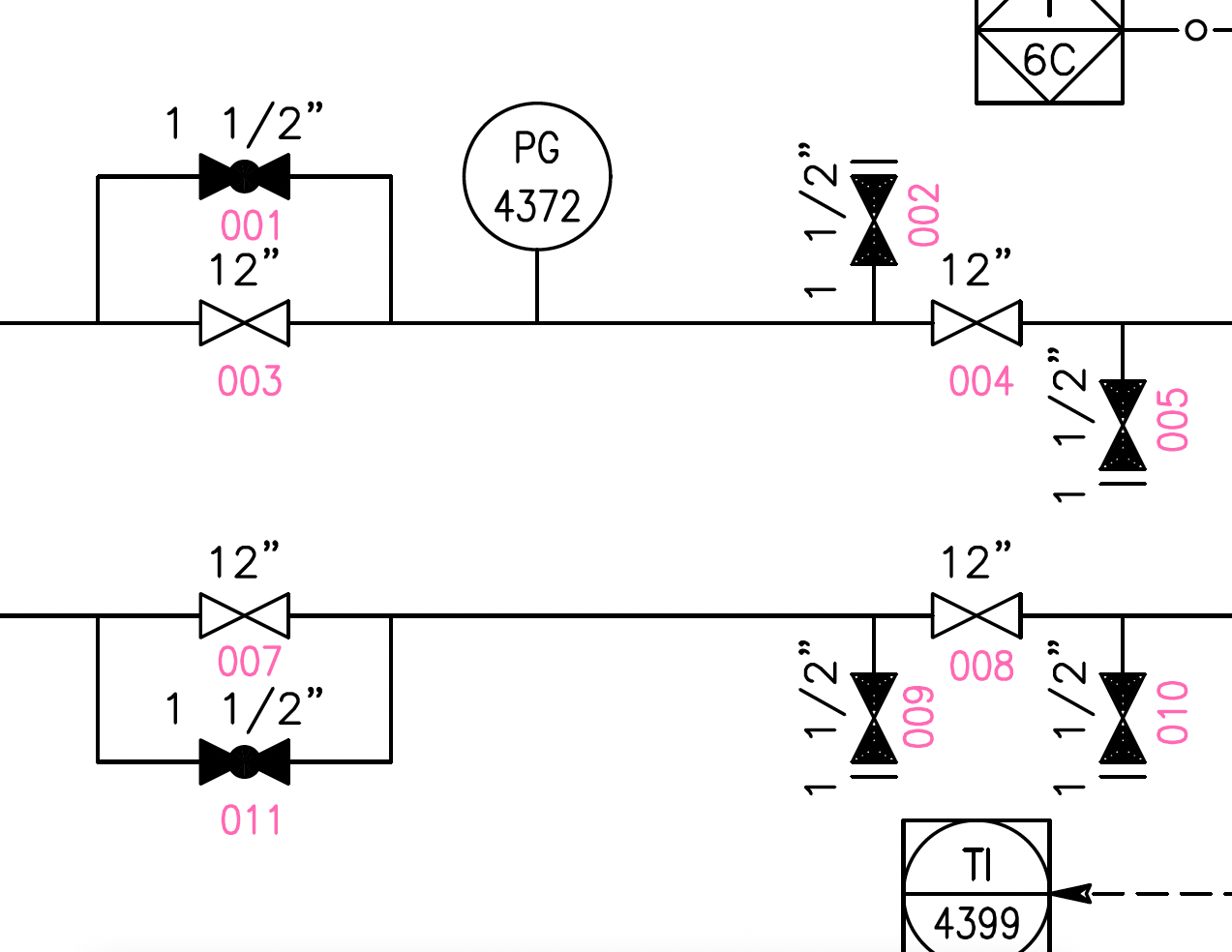A systematic approach to labeling 15,000+ manual valves across 270 P&IDs, reducing a 3-month manual process to 14 days with zero errors.
A major industrial facility utilizing Intelligent Drawing Platform (IDP) required sequential numbering for all manual valves across their operation. This labeling system was critical for operational procedures and lockout tagout (LOTO) safety protocols.
The traditional approach would have required 3-4 months of manual drafting work, with high risk of errors and inconsistencies. Our automated solution delivered complete, accurate results in 14 business days.
Limited drafting resources necessitated a programmatic solution. Manual entry of 15,000+ valve identifiers would have consumed 480-640 person-hours, with error rates typically exceeding 2% in similar manual operations.
Technical Requirements: Each P&ID required independent sequential numbering starting from 001. The system needed to identify and label six valve types: gate, globe, ball, butterfly, needle, and 3-way valves.
IDP's pattern recognition algorithms identified all manual valve instances across 270 P&IDs. The system differentiated between valve types and excluded automated control valves from the labeling scope.
Output: 15,237 valves identifiedSequential numbers were algorithmically assigned per drawing, with automated validation ensuring no duplicates or gaps in the numbering sequence.
Output: Validated mapping tableProgrammatic insertion into AutoCAD masters as symbol attributes, organized in dedicated layers for operational flexibility.
Output: 270 updated P&IDsWhat You're Seeing: These actual P&ID excerpts show manual valves in a gas processing system. Pink sequential labels (001, 002, 003, etc.) were programmatically added to each valve.


Before labeling, procedures would state: "Close the valve downstream from vessel 6C before the temperature indicator." After labeling, the same procedure reads: "Close valve 002." This precision eliminates confusion, reduces errors, and speeds up emergency response times.
| Metric | Traditional | Automated | Improvement |
|---|---|---|---|
| Timeline | 112 days | 14 days | 8× faster |
| Person-Hours | 640 hours | 60 hours | 91% reduction |
| Error Rate | ~2% | 0% | 100% accuracy |
| Cost | $48,000 | $4,500 | 90.6% savings |
The automated valve labeling solution demonstrates the transformative potential of intelligent drawing platforms in industrial operations. By leveraging existing P&ID intelligence, we achieved an 8× acceleration in delivery time while eliminating manual errors entirely.